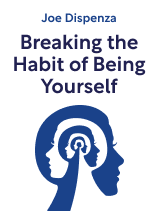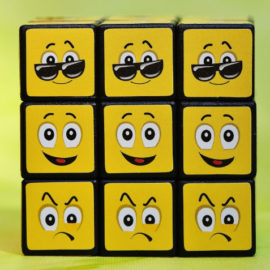

This article is an excerpt from the Shortform book guide to "Breaking the Habit of Being Yourself" by Joe Dispenza. Shortform has the world's best summaries and analyses of books you should be reading.
Like this article? Sign up for a free trial here.
What are feedback loops in psychology? How do thinking-feeling loops keep you trapped in a bad mood?
According to Joe Dispenza, the author of Breaking the Habit of Being Yourself, your thoughts and feelings together create a loop that shapes your reality—what he refers to as a “state of being.” Positive thoughts feed into further positive thoughts and feelings, and negative thoughts perpetuate further negativity.
Here’s how feedback loops shape your reality.
State of Being: A Thinking-Feeling Loop That Leads to Habits
According to Dispenza, thoughts come from the mind, and feelings come from the body. However, while thoughts and feelings originate in different places, they’re constantly giving each other feedback, creating a loop: A thought will make you feel a certain way, and then when you later feel that specific way, you’ll have that same thought. Loops can be positive or negative. A bad thought is accompanied by a bad feeling, and the next time you have that feeling, the bad thought comes. Or you have a good feeling that feeds into good thoughts, and vice-versa.
(Shortform note: Your unconscious brain may have many bad habit loops stored in it, some of which likely developed during childhood as defense mechanisms to deal with difficult or traumatic experiences that you had little or no control over. While these mechanisms may have been useful at the time, they can be damaging in adulthood, especially if your conscious brain isn’t aware of them.)
These psychological feedback loops shape your reality. If you have a negative loop, you’ll see the world negatively. If you have a positive loop, you’ll see the world positively. This reality eventually becomes a part of your identity. If your state of being is one of insecurity, for example, you’ll begin to think of yourself as an insecure person. And, the more these loops are allowed to continue, the more these habits become hardwired into you.
(Shortform note: These loops can even spill over into our daily lives and experiences. If you find yourself having the same problems with every boss you have, or every romantic relationship you have, you may be in an experiential loop. As with thought loops, breaking experiential loops requires deep introspection and an understanding of what’s going on in your conscious and unconscious mind that causes you to keep reliving the same experiences.)
| Controlling Your Reality Through Your Thoughts Many other authors agree with Dispenza’s belief that your thoughts shape your reality. However, they often take different approaches to using this principle to achieve the reality you want. In As a Man Thinketh, James Allen advises taking control over your thoughts by identifying one main purpose for yourself and pursuing it exclusively, directing all your thoughts toward it. If you have one major change you want to make, this method may work better for you than focusing your intention on multiple smaller goals. In Think and Grow Rich, Napoleon Hill echoes this advice of focusing your intention on one large goal, but adds that it can be useful to form a group of people who understand your goal and how to get there and have them help you achieve it. In The Power of Your Subconscious Mind, Joseph Murphy adds to the idea that your thoughts shape your reality by pointing out that other people’s thoughts can affect your own. As important as it is to control the effects of your own thoughts, it’s also vital to ensure that you’re not taking on the negative beliefs of the people in your life. |

———End of Preview———
Like what you just read? Read the rest of the world's best book summary and analysis of Joe Dispenza's "Breaking the Habit of Being Yourself" at Shortform.
Here's what you'll find in our full Breaking the Habit of Being Yourself summary:
- How your habits are keeping you from growing
- How to unlearn your harmful habits to create a new you
- A four-step meditative practice to help you learn new habits






